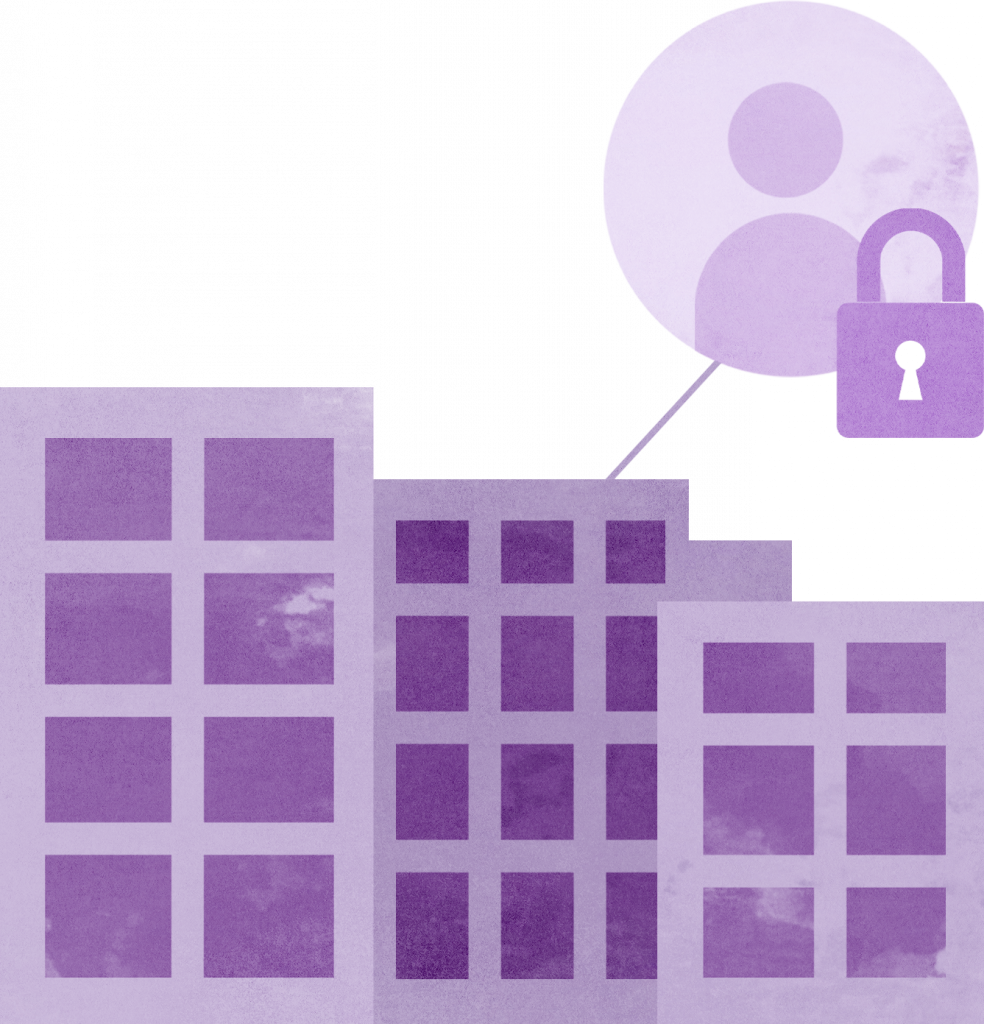How can the public sector support participatory urban data governance efforts?
While the public sector can, and should, lead the charge in developing responsible and participatory urban data governance initiatives, they are not alone in this. We have seen numerous participatory urban data governance efforts – in the form of data stewards or otherwise – work to harness the power of data-enabled decision-making to tackle pressing concerns in the urban context. However, initiatives to incorporate data-enabled policy making in urban governance, such as smart city projects, typically begin with action from a public sector institution and these initiatives are often top-down, without broad and meaningful citizen engagement. To add to this, as has been discussed in the introduction, data that is valuable for urban governance is often siloed, typically by private actors. Even in cases where the data might be in the hands of public institutions, it might either not be easily accessible, or not be available entirely – impacting the ability of communities to use this data for public benefit.
The public sector is uniquely, and ideally, placed to address a number of these issues, and in the process foster an environment that promotes participatory urban data governance and ensures the sustainability of citizen-led urban data governance initiatives. This play outlines a few strategies that can help the public sector develop such an environment by addressing challenges faced by stewards and steward-like initiatives in urban data governance.

Challenge u1.1
Lack of public sector support for participatory urban data governance initiatives
Much like the challenge faced in any other sector, funding is a major concern for participatory urban data governance efforts. Most efforts typically rely on funding from private philanthropic sources, and this is often insufficient in the long term, in addition to causing other issues (as noted below in Challenge 2.1 of this Play). The strategy below looks at how the public sector can alleviate this concern.

Strategy u1.1.1
Public support programs for participatory initiatives

Public sector organisations can institute support programs for participatory initiatives that are aimed at tackling specific issues – such as improving air or water quality in urban spaces, mapping mobility patterns, or easing access to public services. The support can be structured either as direct funding for initiatives, or leveraging public research institutions who can host / house such initiatives. Not only does such support ensure the sustainability of participatory initiatives for urban governance, it can also help the public sector address data gaps in a responsible and participatory manner by focusing initiatives on specific areas.
The CompAir project is an example of this. Funded by the EU’s Horizon 2020 program, the objective of the Compare project is to increase citizens’ capacity to monitor, understand and change their environmental impact by enabling them to measure air quality by deploying easy to use kits and sensors. CompAir was funded under Horizon 2020’s ‘societal challenges’ section. This section is notable for its inclusion of specific areas that speak to urban data governance such as ‘smart, green and integrated transport’.
A critical element to such funding programs is the inclusion of ‘participation’ as a key pillar. The guiding document for Horizon Europe, the successor to the Horizon 2020 project, displays this admirably. Noting that a key learning from the Horizon 2020 project was the need to ‘create more impact through citizen involvement’, Horizon Europe has defined mission characteristics and elements of governance, including citizen needs.
As an example of an initiative supported by a public sector institution through means other than just funding, the University of Washington’s Transportation Data Collaborative (TDC) is notable. The TDC manages, distributes & secures data shared by mobility providers. Framed as a collaborative, stakeholders involved are considered members or ‘project partners’ who share roles and responsibilities based on a trust framework. The India Urban Data Exchange (IUDX) platform is another example of a participatory urban data governance initiative housed in a public research institution. Implemented by the Indian Institute of Science, IUDX serves as a seamless interface for data providers and data users, to share, request, and access datasets related to cities, urban governance, and urban service delivery.
Another novel initiative is Urban.Gro.Lab. It is an urban living lab set up by the Municipality of Groningen, Netherlands and the University of Groningen to use Groningen as a ‘testing ground’ for high quality applied research that focuses on current spatial and societal issues. The lab encourages participation from NGOs, businesses and academia to explore technology for better urban governance.

Challenge u1.2
Limited or staggered citizen involvement in urban data governance
The value of, and need for, citizen engagement in data governance has been addressed in this Playbook at various points. This Playbook has also spotlighted numerous urban data governance initiatives that are participatory in nature. However, citizen involvement in urban data governance is still largely limited. Various factors contribute to the lack of citizen involvement, including a lack of technical knowledge, unavailability of reliable data, dearth of technical infrastructure to leverage data, and an absence of opportunities for citizens to engage.
The public sector is uniquely placed to address a number of these concerns and increase citizen involvement in urban data governance. The strategies presented below go beyond primary measures such as education initiatives that highlight the importance of data in governance and the role citizens can play, and outline pathways for the public sector to ensure citizen engagement throughout the lifecycle of urban data governance initiatives.

Strategy u1.2.1
Encoding participation in policy

Most urban data governance initiatives carried out by governments typically begin with a policy. The policy is a framework document that outlines the needs that are sought to be addressed, the proposed solution to address these issues, the methodology for actioning these solutions, and the possible benefits that can arise out of the implementation.
In addition to ensuring citizen involvement at the stage of developing the policy, coding citizen centricity into these policies can help ensure participation throughout the lifecycle of development and implementation of the technologies. Such coding can include the need for public consultation at various stages of the development and implementation of the technology, using community-led groups to help in the testing and deployment of the technology, or even supporting citizen initiatives that complement the project being undertaken.
The coding of participation must also happen with policies and governance frameworks at various levels of a project. For example, India’s National Geospatial Policy 2022 sets out a 13 year roadmap with the goal of leveraging geospatial technology and data towards achieving Sustainable Development Goals (SDGs). This Policy is a high-level framework that will serve as the basis for various initiatives to be undertaken to achieve this goal. By encoding citizen-centricity at this level, one hopes that all future endeavours undertaken under this Policy will be framed with citizen-centricity in mind.
Similarly, the draft principles for unlocking the value of Scotland’s public sector personal data for public benefit place public engagement and involvement right at the top, and stress on the importance of public involvement throughout the data lifecycle.
Specifically in the domain of urban governance numerous cities have already highlighted their commitment to public engagement through the Declaration of the Cities Coalition for Digital Rights, a coalition of over 50 cities from across the world. A key principle in the declaration records the pledge of these cities to ensure the ability of citizens to “engage with the city through open, participatory and transparent digital processes” and provide everyone “the opportunities to participate in shaping local digital infrastructures and services and, more generally, city policy-making for the common good.”


Strategy u1.2.2
Setting up participatory urban data governance initiatives

The most common form of ensuring civic participation in governance tends to be through public consultations that seek feedback from members of the public on key policies and initiatives. However, this is a limited form of civic engagement and can often see reduced participation when there is limited trust in public institutions revising policies to reflect such comments.
To deepen citizen involvement in urban data governance, and simultaneously build confidence and trust, public institutions can look to setting up various initiatives that actively involve citizens in ideation and creation of initiatives. This could be one-off events, such as ‘hackathons’, or non-temporal portals.
Sydney’s Public Space Ideas Competition is an example of the former. Running from July – November 2020, the competition was set up with the goals of reinforcing the message that public spaces are concerns for everyone; and recognising the positive social, health, cultural, environmental and economic benefits that public spaces provide.
The Houston Hackathon was a 3-day event co-sponsored by the City of Houston, Texas set up to provide an opportunity for people with different skills to collaborate on projects to improve life in Houston. Projects featured at the hackathon included an application that crowd-sources noise pollution data, an application to enable the city to be proactive about street safety, and fix high-risk intersections before tragic crashes occur, and an app that drivers can use during or after rainstorms in order to avoid roads that are likely to flood.
Many cities are also experimenting with setting up portals where citizens can suggest ideas to be implemented by the city. Frankfurt, for example, has a portal where citizens can suggest an initiative, collect support for their proposal and, once the proposal reaches a critical mass, address the Frankfurt city administration directly. In a similar vein, the city of Adelaide, in 2015, launched the ‘Smart City Studio’, to enable innovators to develop, test and commercialise next-generation IoT applications and services. In establishing Smart City Adelaide within the City of Adelaide’s Council, there have been other initiatives to encourage citizen participation in urban data governance. One of the most interesting of these is Minecraft Adelaide, an experimental project where a detailed plan of the city’s ‘built form’, showing its buildings, public infrastructure, streets, park lands and other landmarks was made available on the game Minecraft for users to access and tinker with, to provide possible future design solutions.

Strategy u1.2.3
Creating infrastructure to leverage public data

One of the most important elements of urban data governance is the availability of public data. There is a great amount of public data collected by various institutions that can be leveraged for smart city initiatives, and sustainable city planning. This includes geospatial data, data of air and water quality, mobility data, and population data. Access to this data can enable citizen-led initiatives in contributing constructively to urban governance.
However, access to such data in urban areas tends to be limited or curtailed by various factors. To begin with, in many cases, such data might not be made publicly available. Open data policies can go a long way in addressing these issues, and there is a growing recognition of this globally. Within public institutions themselves, there are issues around the collection and storing of data – be it duplication of data collection efforts or storing of data in different formats. Policies are a great pathway to address these concerns, through mechanisms for greater coordination between bodies and the institution of standards. India’s National Data Governance Framework Policy is one such example. While there is room for improvement with the policy, the policy aims to create uniformity in the collection, storage and sharing of public sector data across India.
Policy is not the only pathway to providing access to public data. Many cities have set up smart city portals that allow interested users to access and analyze data, enabling them to have greater engagement in data-led urban governance. Chicago, Los Angeles, Jakarta, Cape Town and Mexico City all have open data portals.
Beyond just providing access to open data, cities can also set up data dashboards, which can be used to release information for governmental decision-makers, but also for the public to scrutinize government actions, to engage in the decision making processes and to improve decision-making. This can help facilitate transparency and increase trustworthiness while enabling citizens to participate in decision-making in smart cities. A prime example of this was the data dashboard set up by the city of Rio De Janeiro.
Cities can also set up infrastructure that allows citizens to share their own data for public good use in an urban context. While private sector use of data is typically characterised by problematic data practices, public sector institutions can address this issue by setting up the infrastructure that allows citizens to share their data with strict controls, including purpose limitation, thus allowing for a broader audience to access data and build solutions for communities. The DECODE project is a flagship example of this. Piloted in Amsterdam and Barcelona, DECODE set up the infrastructure, through the use of smart contracts, to allow individuals to share their data for specific projects / purposes, allowing for this data to be accessed and used to build community-oriented solutions. In addition to this, the project as piloted in Barcelona also provided an improved mechanism for the participation of individuals in democratic governance. Such systems are part of the broader set of Digital Public Infrastructure, the creation and deployment of which can also help in increasing citizen participation.

Challenge u1.3
Limited technical capacity in public sector institutions
A byproduct of the rapid pace of technology development is the lack of technical competency in public sector officials. This can create a disconnect between the technology being deployed and the individuals responsible for drafting policies and regulations that govern the development and use of these technologies. This disconnect can lead to misuse of data, underutilization of data, and an increase in the influence of private sector actors who are driven by profit motives rather than public good. It is also not always feasible to hire individuals possessing the necessary competencies owing to financial constraints and human resource availability. The strategies below provide pathways to address this issue.



Strategy u1.3.1
Identifying, evaluating, and building competencies of public sector officials

Rather than looking to hire new individuals, public sector institutions can conduct internal reviews to identify and evaluate the competencies of officials, and then provide training to build the necessary competencies. In this regard, public sector institutions can engage with academic institutions as well as civil society organisations to provide the necessary competency training. For example, the Cambridge Centre for Smart Infrastructure (CSIC) has developed a Competency Framework for City Managers that is designed to expose participants to the knowledge needed to address competency-related challenges for the successful delivery of public value through urban digitalisation initiatives. CSIC even conducted a public workshop on the framework. The Open Data Institute (ODI) has a report detailing Lessons on supporting public sector open data leadership, where it has identified various pathways to help build competencies of public sector officials.



Strategy u1.3.2
Increased dialogue with peers and local champions

Building on the competency frameworks mentioned above, the competencies of public sector officials can be further built out by the creation of peer networks to leverage the knowledge of peers from around the world. The ODI, for example, hosts an Open Data Leaders Network that brings together leaders of government open data initiatives around the world, offering a space for sharing knowledge and ideas, discussing common challenges, best practices and learning from peers. Similarly, the Data-Pop Alliance houses the Big Data & Sustainable Development Open Learning Hub, which is a global community of practice through an open and free interactive learning platform, to facilitate the exchange of knowledge and capacity-building about Big Data and Sustainable Development.

Challenge u1.4
Involving the private sector
In addition to possessing large amounts of data relevant for urban data governance, the private sector also holds the necessary skills and infrastructure to harness data for effective urban governance. However, involving the private sector in projects for public good is not straightforward and requires nuance and specific initiatives. The following strategies detail how the public sector can help involve the private sector in participatory and responsible urban data governance.



Strategy u1.4.1
Regulatory sandboxes for innovation

A regulatory sandbox is a framework which allows participants to conduct live testing of new business models in a controlled environment, under the supervision of the regulator, with reduced regulatory overheads. Sandboxing is generally used to test technology enabled innovations and solutions in a particular sector. This usage of the term ‘sandbox’ comes from the tech world, where it refers to testing of new technology in a limited environment that is closed off from the rest of a system, so as to safeguard the system from the potentially negative effects of testing. Sandboxing has also been associated with the ‘void’ of policy that existed in specific sectors. While the financial sector has seen the greatest adoption of the concept of regulatory sandboxing, regulators in other traditional sectors, including medical services (as seen in Singapore and India), energy (explored in the Netherlands and United Kingdom), and gaming (with the sandbox launched by the Malta Gaming Authority) have initiated regulatory sandboxing frameworks.
Public sector governance bodies can look to setting up sandbox initiatives for urban data governance to induce increased participation of private actors. Public sector bodies can ensure that the projects tested in these sandboxes are participatory in nature by including the same as a necessary precondition in the sandbox frameworks.


Strategy u1.4.2
Partnerships between public and private institutions

Public sector institutions can also look to set up partnerships to involve private sector actors in participatory urban data governance. In addition to mitigating against low capacity in the public sector, such partnership can help overcome trust deficits between the public at large and private sector actors. One such example is the partnership between the municipality of Rio de Janeiro and Waze to employ citizen-generated data combined with government data. Insights from the data collected were then used by the Center of Operations Rio (COR) to send realtime information about route changes, flood routes, traffic jams, and car accidents to citizens. COR also had a similar partnership with the Moovit app to improve the quality of public transportation and transparency by providing citizens with real-time information about the city’s bus system. The data was also used by the local government transport department for predictive purposes and to plan future changes. Another example involves the Copenhagen City Data Exchange, a public – private partnership between the Copenhagen Municipality, CLEAN and Hitachi with goal of creating a shared data hub to foster innovation and inspire new thinking that will improve the quality of life in the Copenhagen area, stimulate business activity, and help to achieve Copenhagen’s goal to be carbon neutral by 2025.
By building in necessary protections, such partnerships can also help bring together private actors who are competing entities in the same sector. The University of Washington’s Transportation Data Collaborative (mentioned earlier) managed this successfully. As the steward, University of Washington is able to incentivize even private players to share data by creating a digital layer that prevents data from being accessed by competitors.
